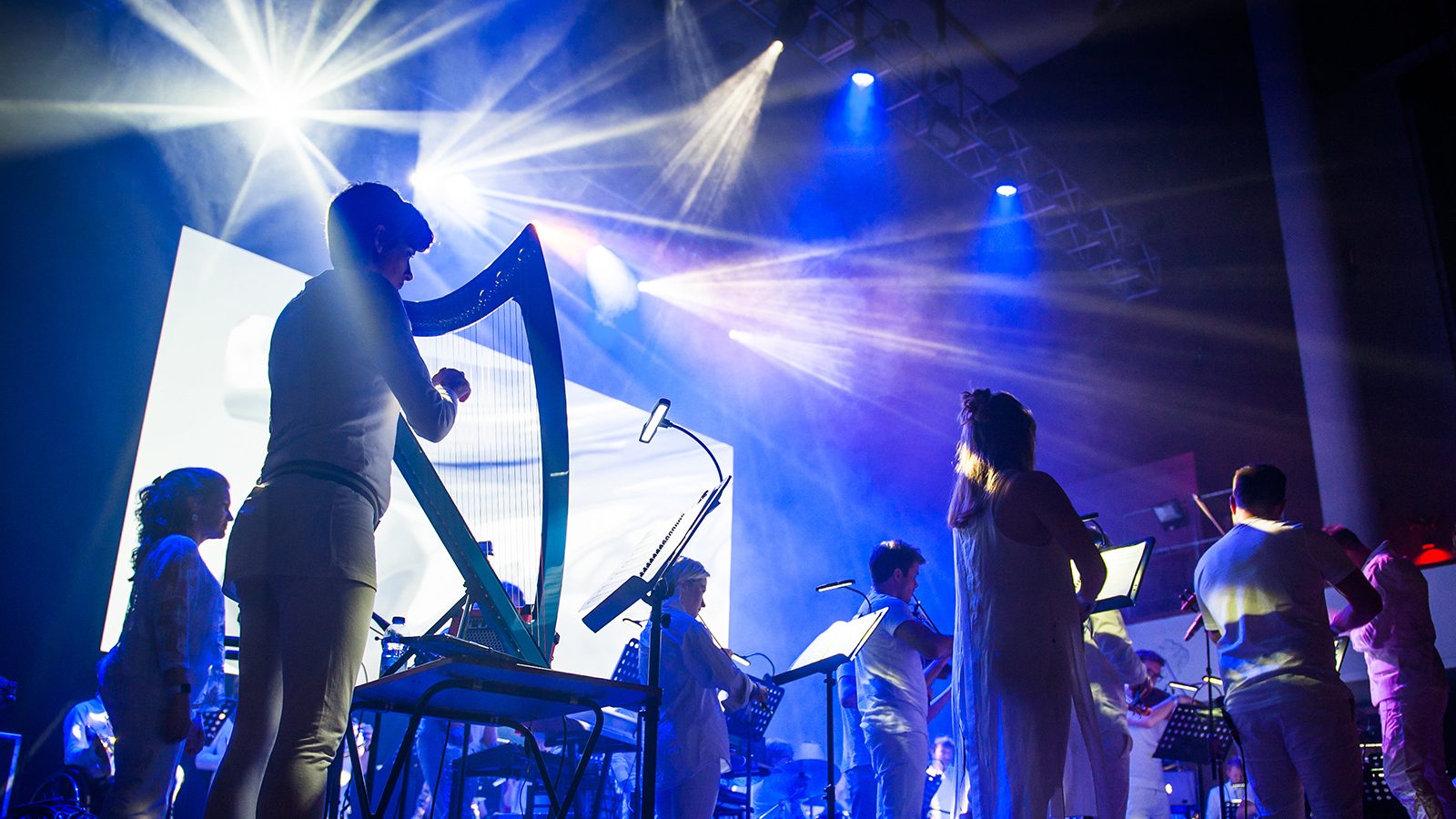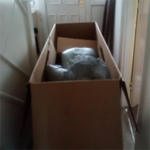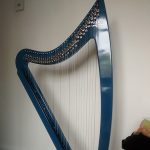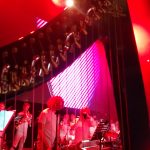And there it was, finally in my hall: a box so large I could barely squeeze past it. Nestled amongst the foam was my brand new electroharp.
I’d wanted an electroharp for a really long time, since hearing pioneers Mary MacMaster, Patsy Seddon and Corrina Hewat play them at the Edinburgh International Harp Festival in the mid-noughties. An electroharp offers a harpist a different sound world, the opportunity to turn the volume up and play in bigger spaces, with different bands, with a serious punch. Acoustic harps are beautiful but can act like a microphone for everything else in the room, a potential disaster in a loud space.
Camac Harps have been at the forefront of electroharp technology for over 30 years and created their first prototype solid body electric harp in 1984. With an iconic sound that is similar to a Rhodes piano up top and a bass guitar at the bottom, when harpists think of an electroharp they’re normally thinking of a Camac.
Electroharps have a piezzo pickup on every string and a solid body. You can plug them into pedals, loopers, effects and stacks just like an electric guitar. The latest model created by Camac is called the DHC Light and weighs only 5.5kg; this harp is wearable. This is an extraordinary achievement, using handmade wood and foam bodies encapsulated by carbon fibre, borrowing technology from bicycle making. A special mention must go to harpist force of nature Deborah Henson Conant who has been a driving the development of this instrument for decades.
Having mentioned to Charles Hazlewood I was seriously considering buying an electric harp back in February, he was utterly enthusiastic that it should arrive in time for our kraftwerk re:werk gig last month. I approached Camac Harps very shortly after and they took on the challenge, creating the first left-handed DHC Light. Harps often take as long or longer than babies to arrive so seven months notice was not really enough. Luckily this stork delivered early. I have huge thanks to express to Jakez, Elen and all the people who work at Camac Harps for turning around my instrument so quickly.
Exciting delivery: three images show a large rectangular cardboard box with polystyrene packaging and a shiny blue electroharp standing upright , third image is a view from the electroharp on stage
I really appreciate anyone who makes me a harp as it will always take extra time and effort. A congenital hand deformity means that I play with my left hand at the top and need a mirror-reversed instrument. I can’t hire harps abroad, I can’t buy second hand, and travelling is often terrifying as my one fragile wooden voice gets a thousand little knocks and bumps and is passed into the trust of strangers. This new instrument takes the lid off my limitations in terms of travel but also allows me to use other technology to amplify what I can do and dodge the problems my hand presents. My condition macrodactyly can change over time so an instrument that I could potentially play one handed with a loop pedal is a lifeline. Whether or not that reality comes to pass, playing with loops is great fun and there is even more innovative technology on the horizon in the shape of Harp CI, an electroharp with sound effects controlled by a MyoSpat arm band.
Getting ready for an orchestral gig for me is a matter of, a lot of listening, a bit of planning and getting your practise in, in any tricky corners. In this case it also meant getting used to a brand new instrument with different string spacing in the melody area and an unusual tuning pattern. For all the harp geeks out there I found Renié’s technique works the best for electroharp, with excellent posture and super relaxed hands giving a sweet tone especially in the upper register. Luckily the weekend before I’d had the chance to go to a jam, often the best way to start knitting up that sixth sense of how you and your instrument work together. The jam was like taking a baby to its first party where everyone wants to meet it and coo. The harp even got a shout out on BBC Oxford Introducing that afternoon!
So back to the piece that this harp was born for, kraftwerk re:werk. What a first adventure playing for 2000 people with an amazing new electro-classical commission that was also being mixed live with a Kaoss Pad. This was a big sound, mixing Paraorchestra players, a barrage of analogue synths and the best part of a symphony orchestra. Composers Charlotte Harding and Lloyd Coleman created a piece packed with rhythmic interest, ranging from heaving bass rock riffs to acid bright techno via the Alpine peaks, an orchestra copying arpeggiators and drum programmes, humans playing material originally designed for machines. It had a great energy and the audience loved it, dancing from the start and whoops and cheers at the end of every movement. On stage, the fantastic writing held our attention all the way through and it was like the gig played itself. It’s great doing a show where even the security guards love it.
And after the gig? As a new electroharp player I have many things to take away. The biggest change is that I need to think like a brass player, commit and go for it. I can do things never possible with an acoustic harp: be heard above an orchestra, fill a large venue like the Colston Hall, crash an ending dramatically… it’s a brave new world. I still love my acoustic harp and nothing will replace it. However, I can see a whole raft of new destinations on the horizon and the Paraorchestra has never been short on providing exciting projects. Adventures await…
Visit Steph West’s personal website
More reading about Camac Harps, Deborah Henson Conant and the DHC Light and Harp CI:
https://www.camac-harps.com/en/la-maison-camac/
http://www.hipharp.com/blog/1363
http://www.balandinodidonato.com/publications/harpci/

